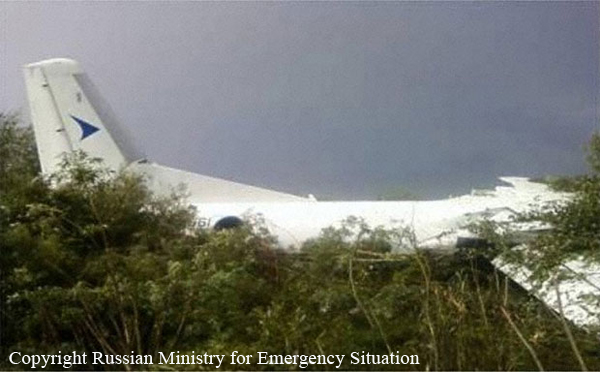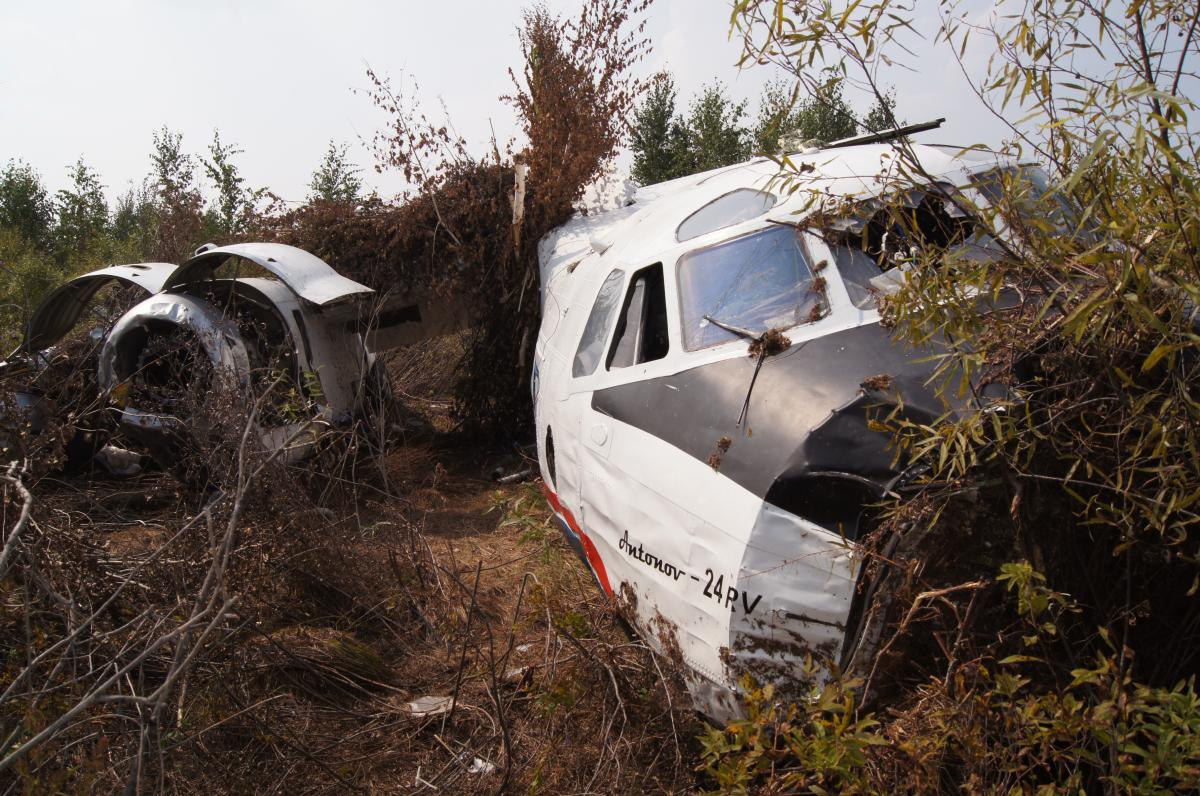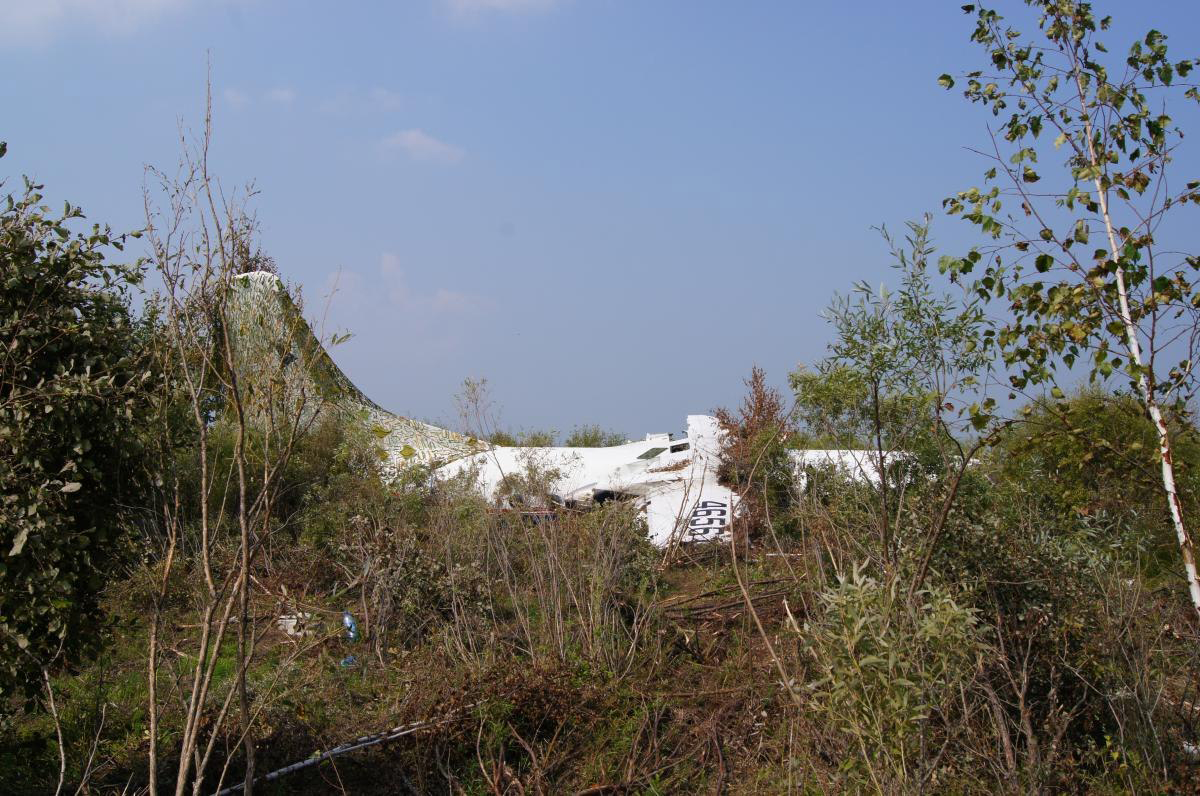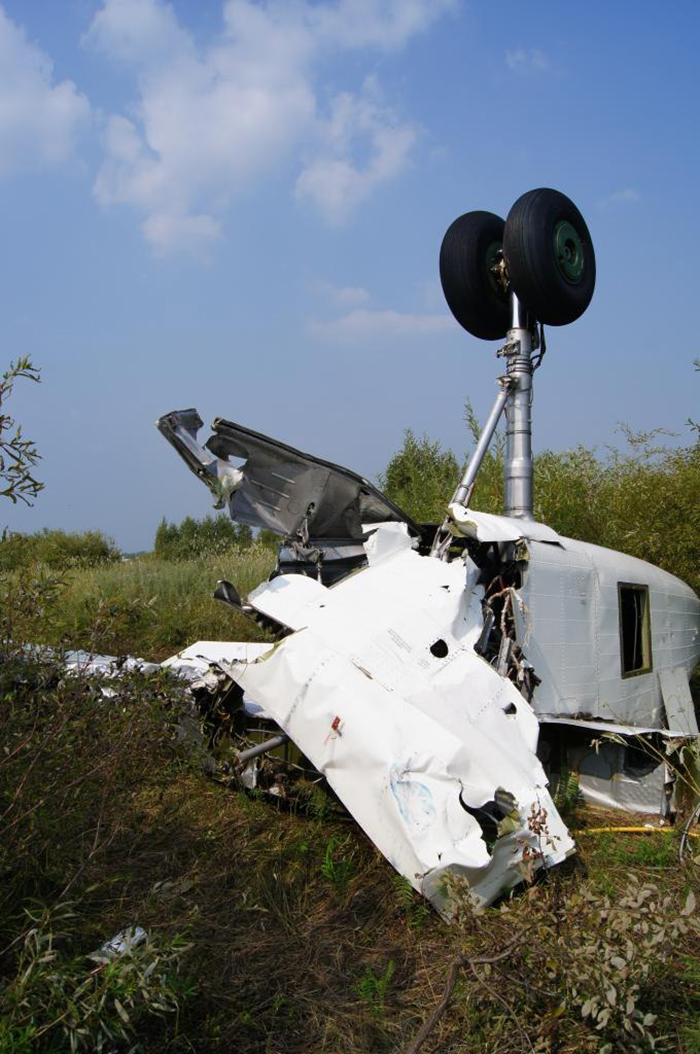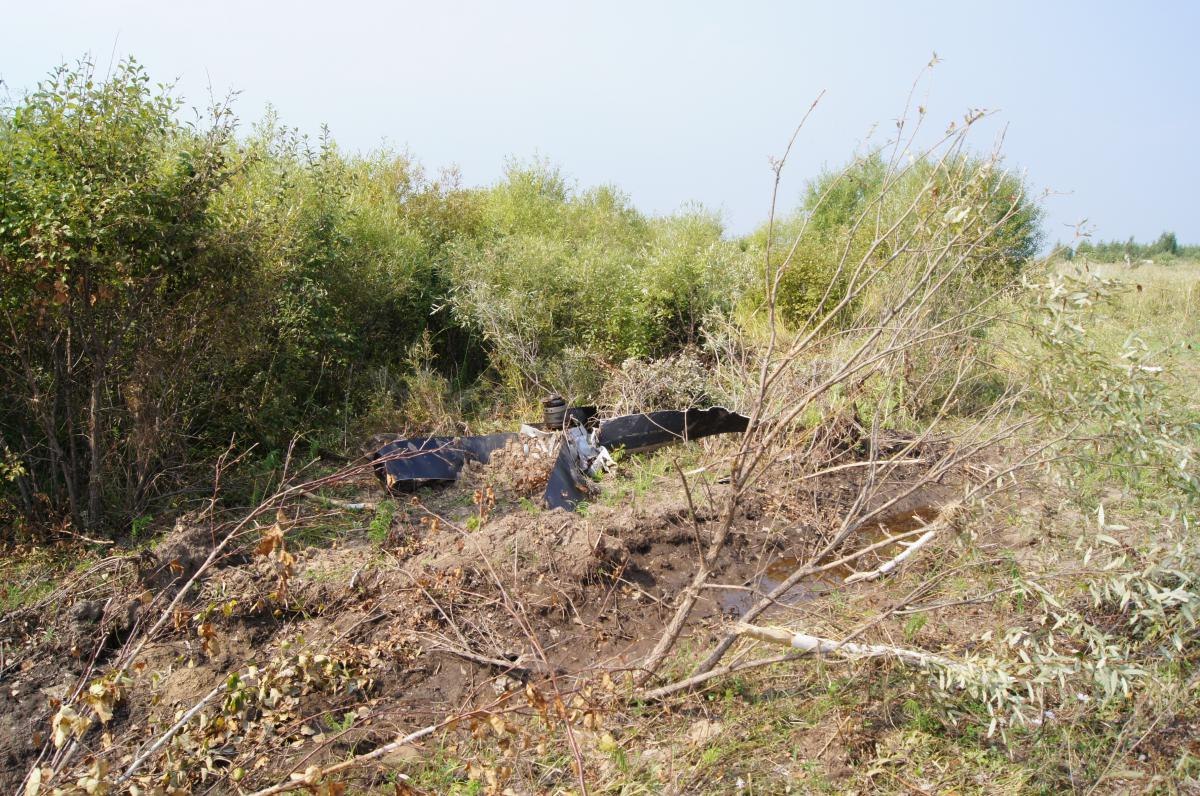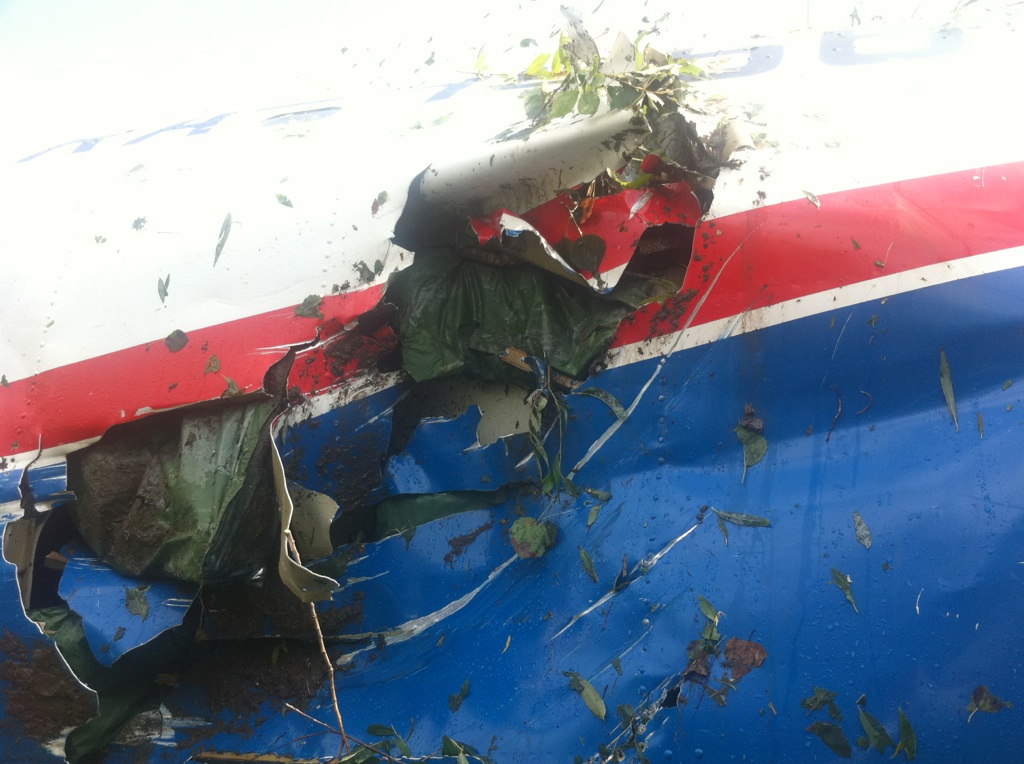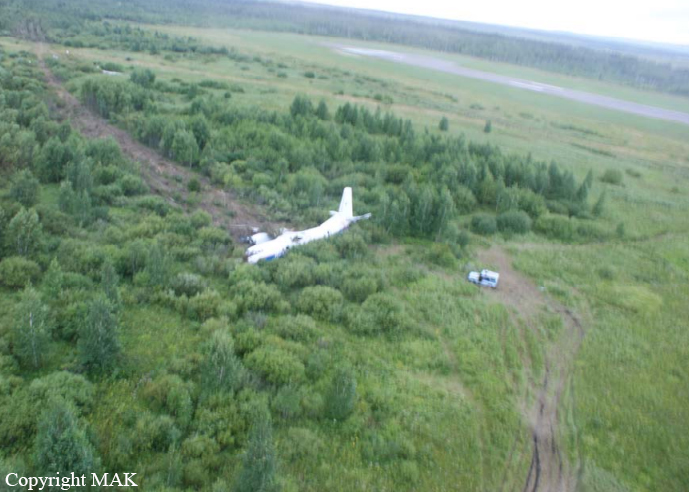Region
Crash of a PZL-Mielec AN-2R in Zasovskaya
Date & Time:
Oct 9, 2011 at 1128 LT
Registration:
RA-81514
Survivors:
Yes
Schedule:
Zasovskaya - Zasovskaya
MSN:
1G208-14
YOM:
1984
Crew on board:
1
Crew fatalities:
Pax on board:
0
Pax fatalities:
Other fatalities:
Total fatalities:
0
Aircraft flight hours:
6449
Aircraft flight cycles:
30385
Circumstances:
The pilot, sole on board, was completing a spraying mission on sunflower plantations in Zasovskaya. While flying at a height of about 20 metres, preparing for a new low pass, the single engine aircraft collided with power cables, stalled and crashed upside down in an open field, bursting into flames. The aircraft was destroyed and the pilot was seriously injured.
Probable cause:
The cause of the accident without casualties to the plane An-2 RA-81514 was a violation of the established safe obstacle clearance in the performance of aviation-chemical works, which led to a collision with the lightning protection wire transmission line and the ground. A contributing factor was the performance of an incomplete flight crew. According to the An-2 Flight Manual the minimum crew for aerial chemical works is the commander of the aircraft and a copilot.
Final Report:
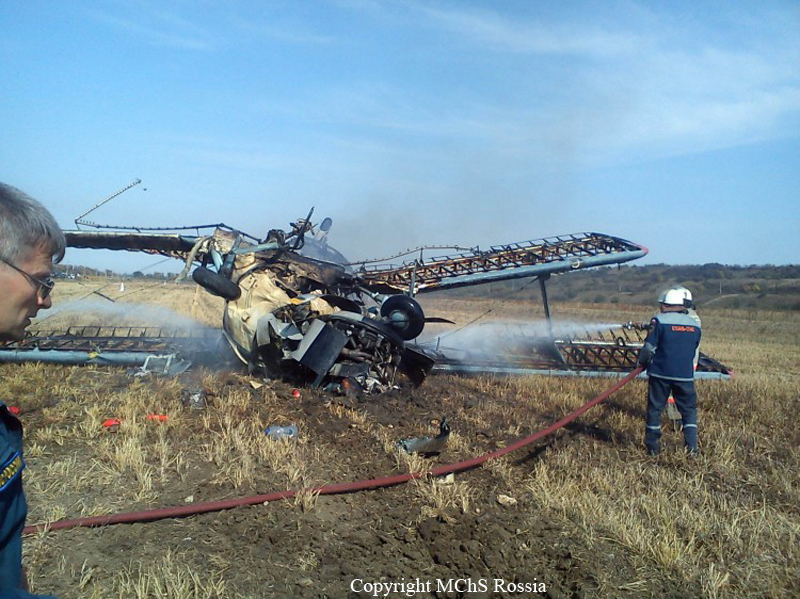
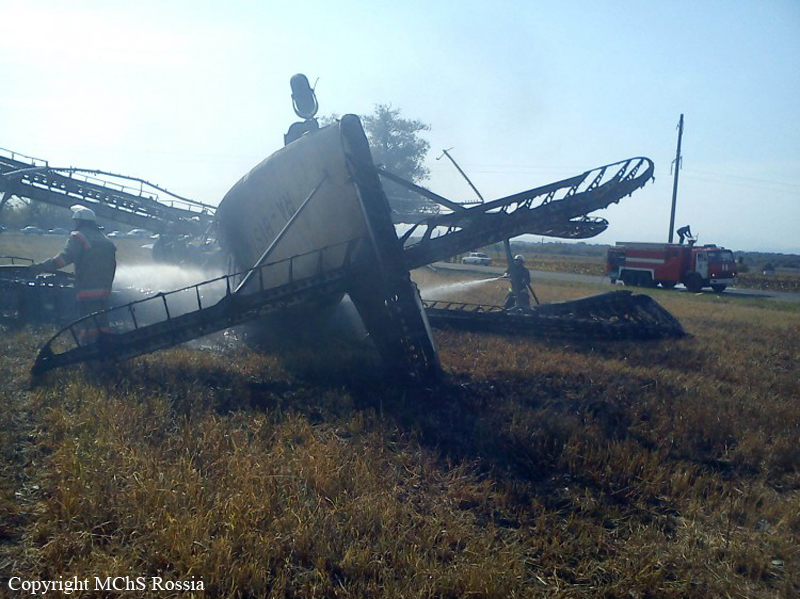
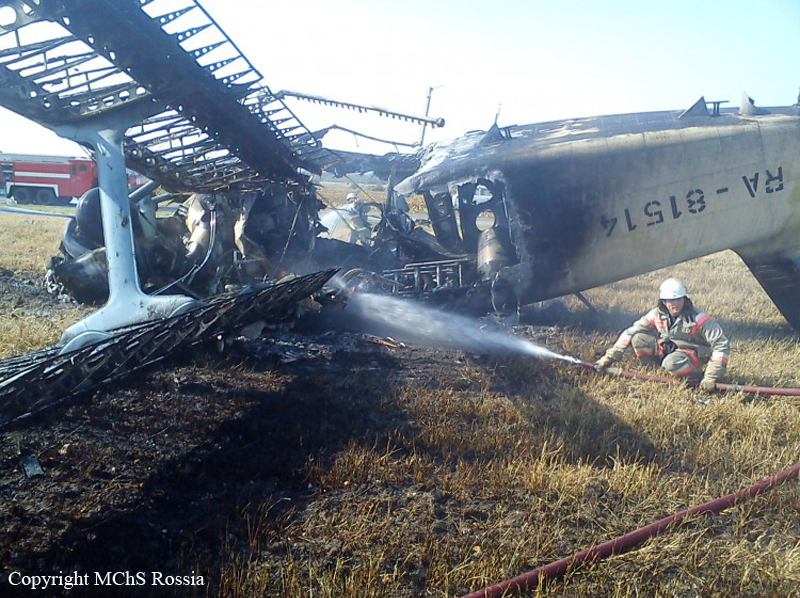
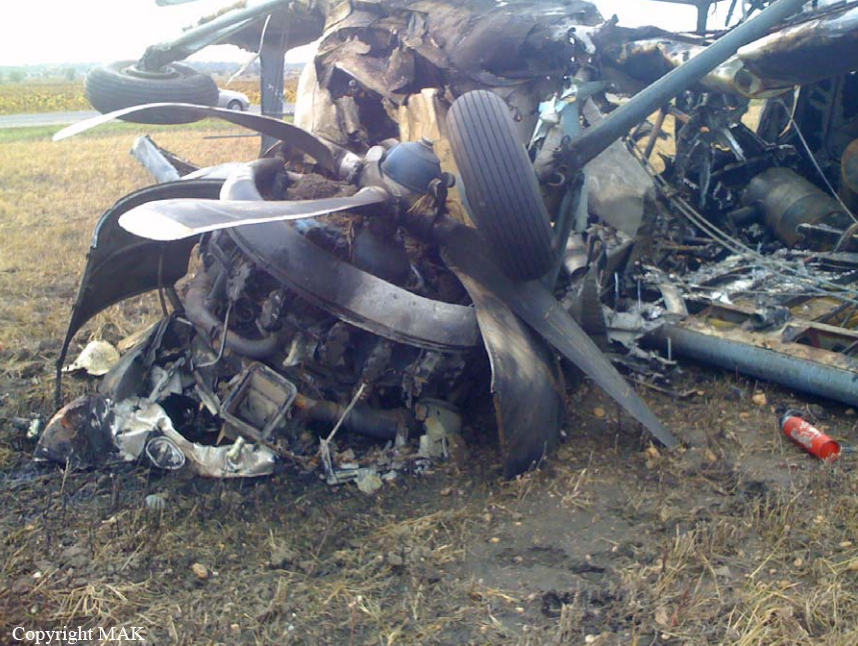
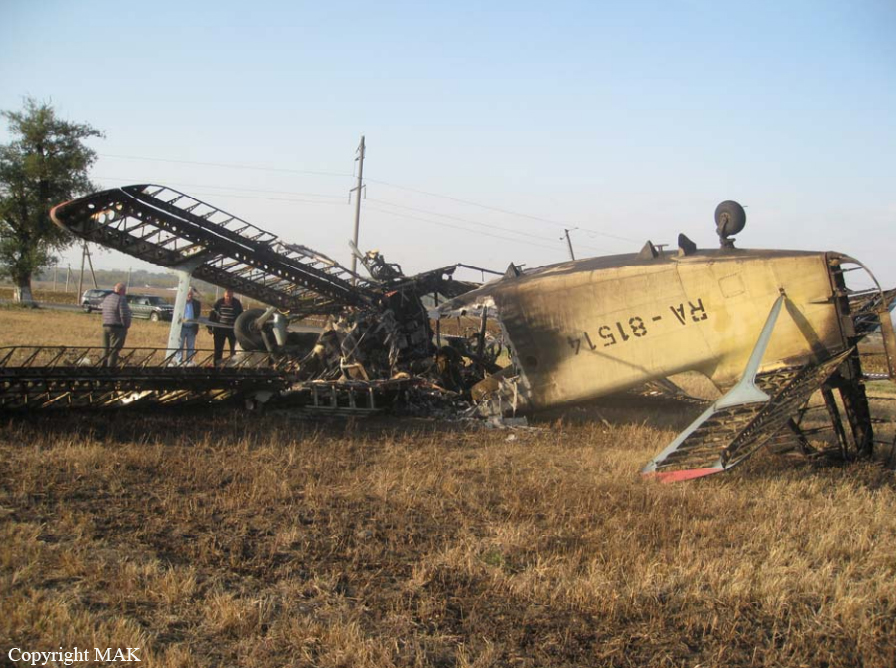
Crash of a Yakovlev Yak-42D in Yaroslavl: 44 killed
Date & Time:
Sep 7, 2011 at 1600 LT
Registration:
RA-42434
Survivors:
Yes
Schedule:
Yaroslavl - Minsk
MSN:
4520424305017
YOM:
1993
Flight number:
AEK9633
Crew on board:
8
Crew fatalities:
Pax on board:
37
Pax fatalities:
Other fatalities:
Total fatalities:
44
Captain / Total hours on type:
1525.00
Copilot / Total hours on type:
613
Aircraft flight hours:
6490
Aircraft flight cycles:
3112
Circumstances:
The aircraft was chartered by the Lokomotiv Yaroslavl ice hockey team to carry his staff to Minsk to take part to the first game of the Russian 2011-2012 championship. During the takeoff roll from runway 23 at Yaroslavl-Tunoshna Airport, the crew selected flaps down at 20° and the stabilizer in a nose-up position of 8,7°. The aircraft slowly accelerated to 165 km/h due to a residual pressure on the brake pedal. At a speed of 185 km/h and at a distance of 1,350 metres from the runway end, the nose gear lifted off. But the aircraft continued, passed the runway end and rolled for about 400 metres before it took off. Then it collided with various approach lights and the localizer antenna, lost height and eventually crashed on the shore of the Volga River, bursting into flames, 2 minutes after the takeoff roll was initiated. A passenger and the flight engineer were seriously injured while 43 other occupants were killed. Almost a week later, the passenger died from his injuries. Among the passengers were 26 players from the Lokomotiv Yaroslavl ice hockey team, Russian citizens and also Canadian, Czech, Ukrainian, German and Slovak. The Canadian coach Brad McCrimmon, his both assistants, the cameraman, three masseurs, one admin and two doctors were among the victims.
Probable cause:
Erroneous actions on part of the crew, especially by applying brake pedal pressure just before rotation as result of a wrong foot position on the pedal during the takeoff run. This led to braking forces on the main gear requiring additional time for acceleration, a nose down moment preventing the crew to establish a proper rotation and preventing the aircraft to reach a proper pitch angle for becoming airborne, overrun of the runway at high speed with the elevator fully deflected for nose up rotation (producing more than double the elevator forces required to achieve normal takeoff rotation). The aircraft finally achieved a high rate of nose up rotation, became airborne 450 meters past the runway end and rotated up to a supercritical angle of attack still at a large rate of pitch up causing the aircraft to stall at low altitude, to impact obstacles and ground, break up and catch fire killing all but one occupants.
Contributing factors were:
- serious shortcomings in the re-training of the crew members with regards to the Yak-42, which did not take place in full, was spread out over a long period of time and took place while the crew remained in full operation on another aircraft type (Yak-40), which led to a negative transfer of skills, especially a wrong position of the foot on the brake pedal on the Yak-42,
- Lack of supervision of the re-training,
- errors and missed procedures by the crew in preparation and execution of the takeoff,
- inconsistent, uncoordinated actions by the crew in the final stages of the takeoff.
Contributing factors were:
- serious shortcomings in the re-training of the crew members with regards to the Yak-42, which did not take place in full, was spread out over a long period of time and took place while the crew remained in full operation on another aircraft type (Yak-40), which led to a negative transfer of skills, especially a wrong position of the foot on the brake pedal on the Yak-42,
- Lack of supervision of the re-training,
- errors and missed procedures by the crew in preparation and execution of the takeoff,
- inconsistent, uncoordinated actions by the crew in the final stages of the takeoff.
Final Report:


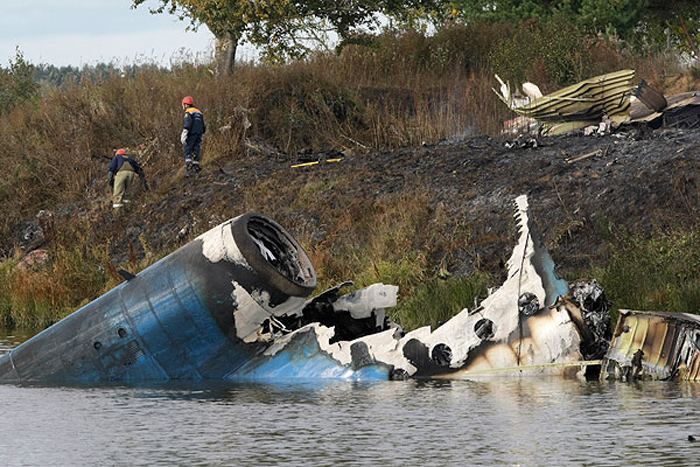
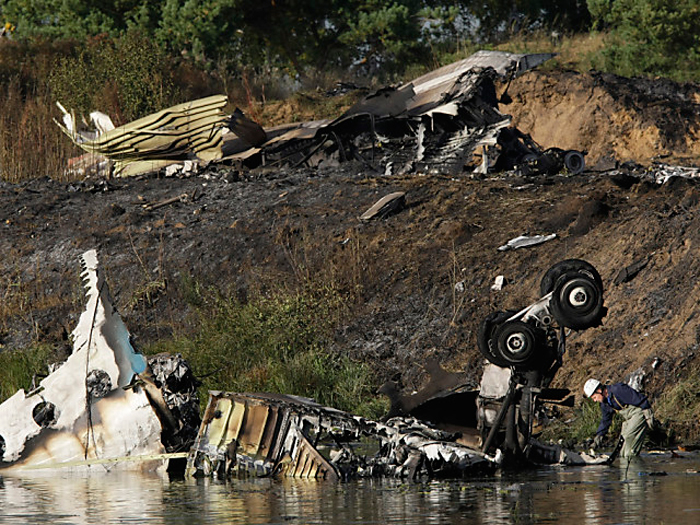

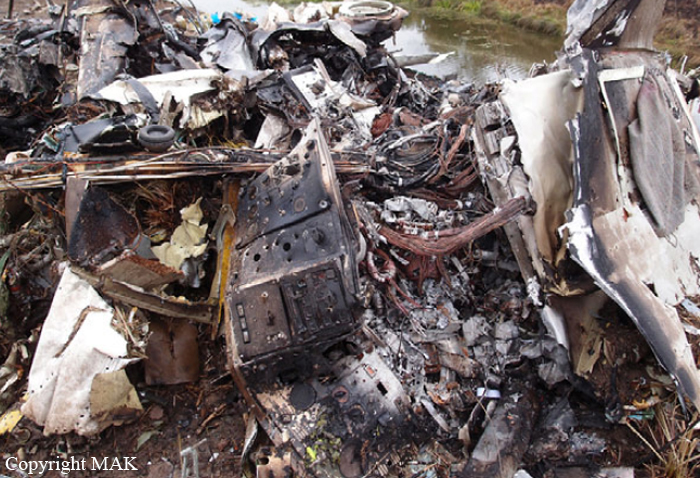
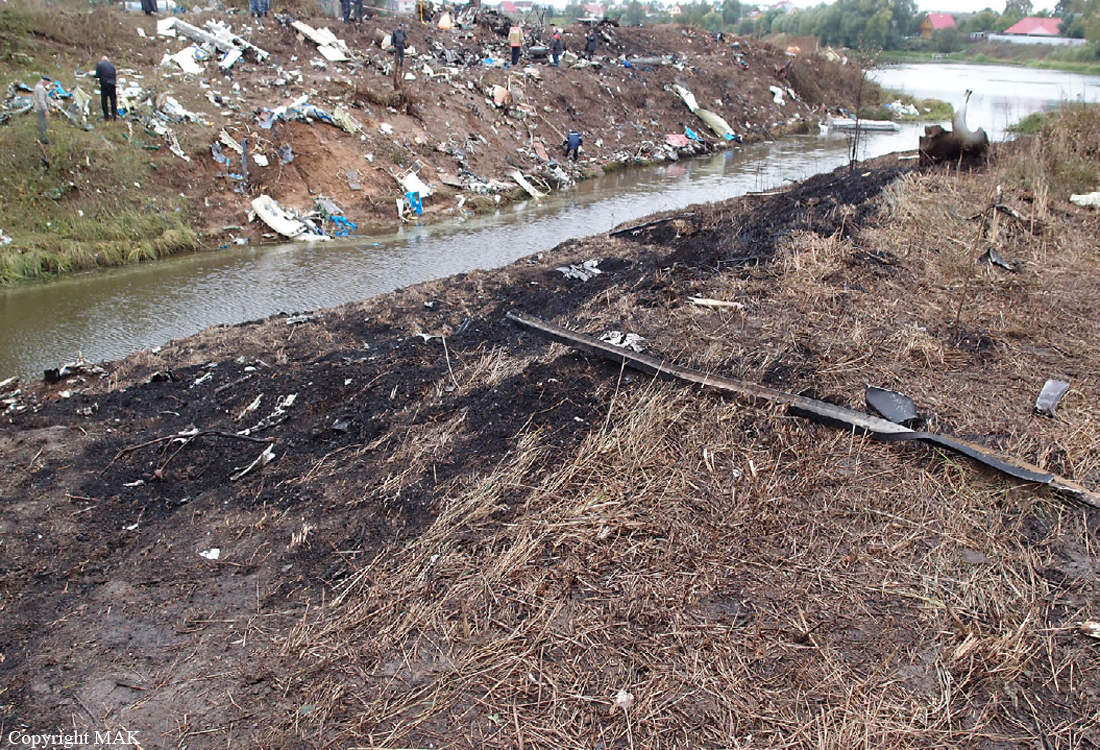
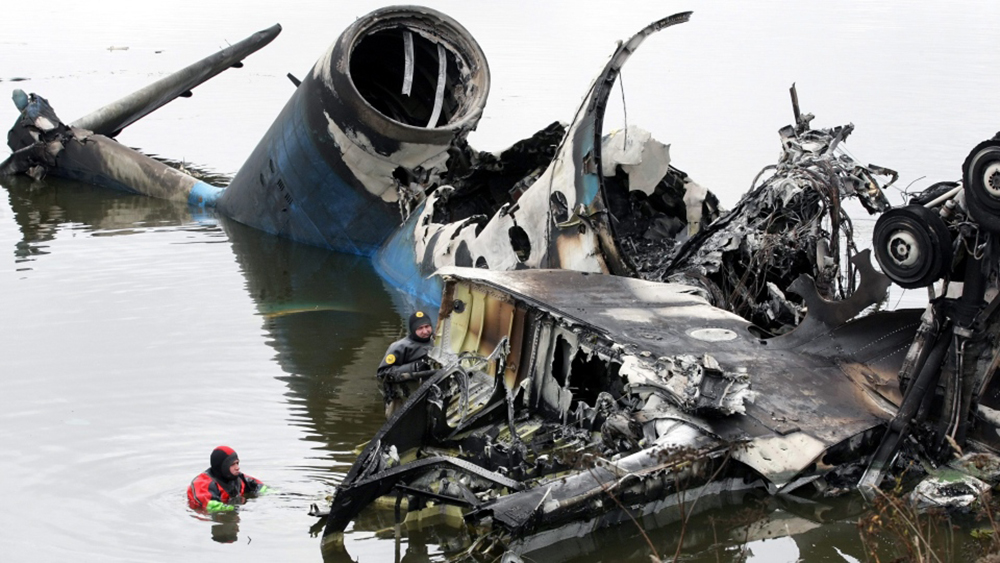
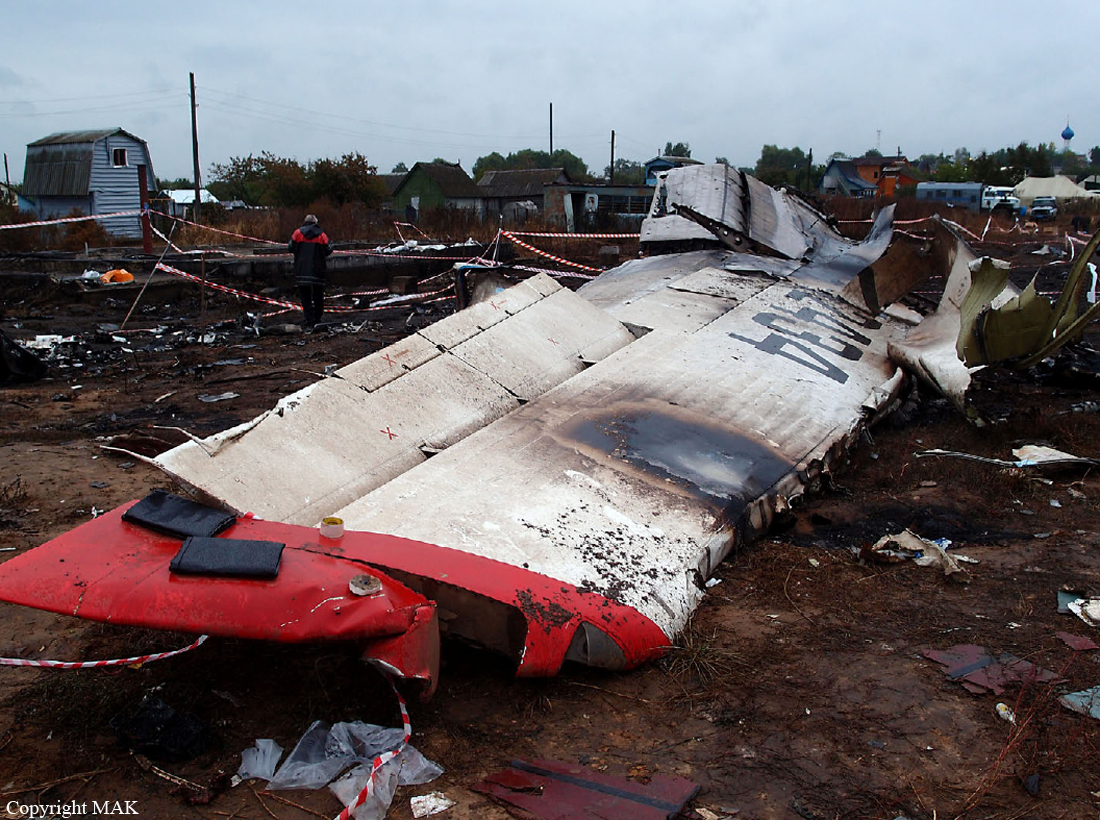
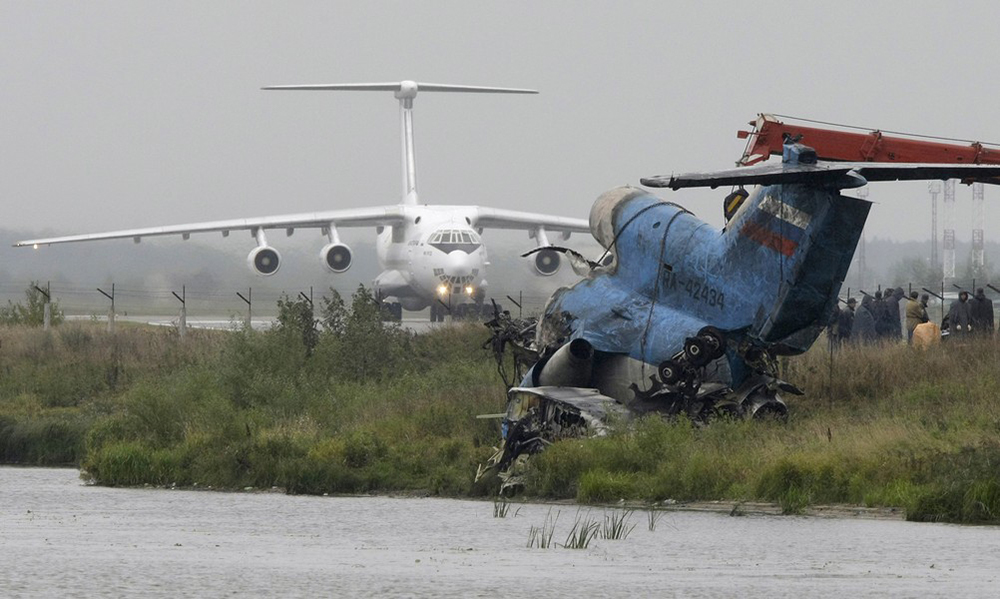

Crash of a PZL-Mielec AN-2R in Baranikovskiy: 1 killed
Date & Time:
Aug 28, 2011 at 0854 LT
Registration:
RA-01105
Survivors:
Yes
Schedule:
Baranikovskiy - Baranikovskiy
MSN:
1G239-50
YOM:
1991
Crew on board:
1
Crew fatalities:
Pax on board:
1
Pax fatalities:
Other fatalities:
Total fatalities:
1
Aircraft flight hours:
1208
Aircraft flight cycles:
4247
Circumstances:
The single engine aircraft was dispatched in Baranikovskiy to perform a crop spraying mission on rice paddy field. Before flight, the tank was refueled with 250 litres of E95 fuel. The technician told the pilot the fuel was abnormally yellow but the pilot decided to proceed with the flight. Prior to take off, he asked the copilot to stay on ground and replaced him by the owner of the zone to be treated which is against the published procedures. During the takeoff roll, the aircraft did not accelerate as expected but the pilot continued. After liftoff, at a height of about 30 metres, the pilot initiated a 90° left turn when the engine lost power. He started to drop the load of chemicals then attempted an emergency landing when the aircraft impacted ground. It continued for about 134 metres then struck an irrigation drain, nosed over and came to rest, bursting into flames. The pilot was killed and the passenger was seriously injured.
Probable cause:
The accident was caused by a loss of engine power because the aircraft has been refueled with fuel dedicated to automobile.
The following contributing factors were identified:
- The pilot's lack of knowledge about the flight area and the layout of cultivated fields,
- The pilot failed to brake properly during the emergency landing,
- The absence of a copilot on board,
- The Operator certificat was revoked 3 days prior to the accident.
The following contributing factors were identified:
- The pilot's lack of knowledge about the flight area and the layout of cultivated fields,
- The pilot failed to brake properly during the emergency landing,
- The absence of a copilot on board,
- The Operator certificat was revoked 3 days prior to the accident.


Crash of an Antonov AN-2 near Choigan-Khole Lake: 1 killed
Date & Time:
Aug 22, 2011
Survivors:
Yes
Schedule:
Petropavlovka - Toora-Khem
Crew on board:
1
Crew fatalities:
Pax on board:
7
Pax fatalities:
Other fatalities:
Total fatalities:
1
Circumstances:
The single engine aircraft was performing an on-demand flight from Petropavlovka to Toora-Khem with seven fishermen and a pilot who want to go to a remote fish camp located in the natural reserve of Azas. While flying at low altitude, the aircraft went out of control and crashed on the shore of the Choigan-Khole Lake, near the Sorug River. While all seven passengers escaped with minor injuries, the pilot was killed. It appears that the aircraft was not registered and did not have any certificate of airworthiness. Therefore, the flight was considered as illegal and no flight plan was filed.
Crash of an Antonov AN-12AP near Omsukchan: 11 killed
Date & Time:
Aug 9, 2011 at 1532 LT
Registration:
RA-11125
Survivors:
No
Schedule:
Komsomolsk-on-Amur – Magadan – Keperveyem
MSN:
3 3 410 06
YOM:
1963
Flight number:
LN9209
Crew on board:
9
Crew fatalities:
Pax on board:
2
Pax fatalities:
Other fatalities:
Total fatalities:
11
Captain / Total hours on type:
6263.00
Copilot / Total hours on type:
3838
Aircraft flight hours:
18709
Aircraft flight cycles:
9172
Circumstances:
The four engine aircraft departed Komsomolsk-on-Amur Airport on a cargo service (flight LN9209) to Keperveyem with an intermediate stop in Magadan, carrying 17,43 tons of various goods, two passengers and a crew of nine. The aircraft departed Komsomolsk-on-Amur Airport at 1437LT. At 1520LT, while cruising at an altitude of 7,500 metres about 430 km northeast from his departure point, the crew informed ATC about a fuel leak on the engine n°1, requested a descent to 6,600 metres then the clearance to return to Komsomolsk-on-Amur. After the engine n°1 caught fire, the crew declared an emergency and started an emergency descent. Out of control, the aircraft crashed on the slope of a mountain located about 82 km southwest from Omsukchan. The aircraft disintegrated on impact and the debris were found a day later at an altitude of 1,006 metres. All 11 occupants were killed. This Antonov AN-12 was the oldest model still in commercial service in Russia.
Probable cause:
The probable causes of the crash were:
Following the inflight shut down of engine number one and feathering of the number one propeller the longitudinal (roll) control of the aircraft was lost due to load-bearing properties of the left wing and possible damage to the left hand aileron control wiring resulting in the aircraft's uncontrolled excessive roll to the left and subsequent impact with terrain. The fire started in the tail section of the #1 engine nacelle and spread forward and onto the wing. The fire was most likely fed by fuel leaking from a fuel line connection to the low pressure fuel pump at engine #1, the fuel most likely ignited due to contact with hot engine parts. Due to the disintegration of the aircraft and fire damage it was not possible to establish the location of fuel leaks and the cause with certainty. The inability of the fire suppression system to extinguish such a fire in its early stages as well as the lack of checklists/guidelines in the aircraft's flight manual for fuel leaks inside the engine nacelle contributed to the delay of more than 2 minutes to shut the engine down. The mountainous terrain underneath the aircraft, low level overcast cloud and lack of time due to continued fire did not permit the crew to select a proper site for an emergency landing.
Following the inflight shut down of engine number one and feathering of the number one propeller the longitudinal (roll) control of the aircraft was lost due to load-bearing properties of the left wing and possible damage to the left hand aileron control wiring resulting in the aircraft's uncontrolled excessive roll to the left and subsequent impact with terrain. The fire started in the tail section of the #1 engine nacelle and spread forward and onto the wing. The fire was most likely fed by fuel leaking from a fuel line connection to the low pressure fuel pump at engine #1, the fuel most likely ignited due to contact with hot engine parts. Due to the disintegration of the aircraft and fire damage it was not possible to establish the location of fuel leaks and the cause with certainty. The inability of the fire suppression system to extinguish such a fire in its early stages as well as the lack of checklists/guidelines in the aircraft's flight manual for fuel leaks inside the engine nacelle contributed to the delay of more than 2 minutes to shut the engine down. The mountainous terrain underneath the aircraft, low level overcast cloud and lack of time due to continued fire did not permit the crew to select a proper site for an emergency landing.
Final Report:


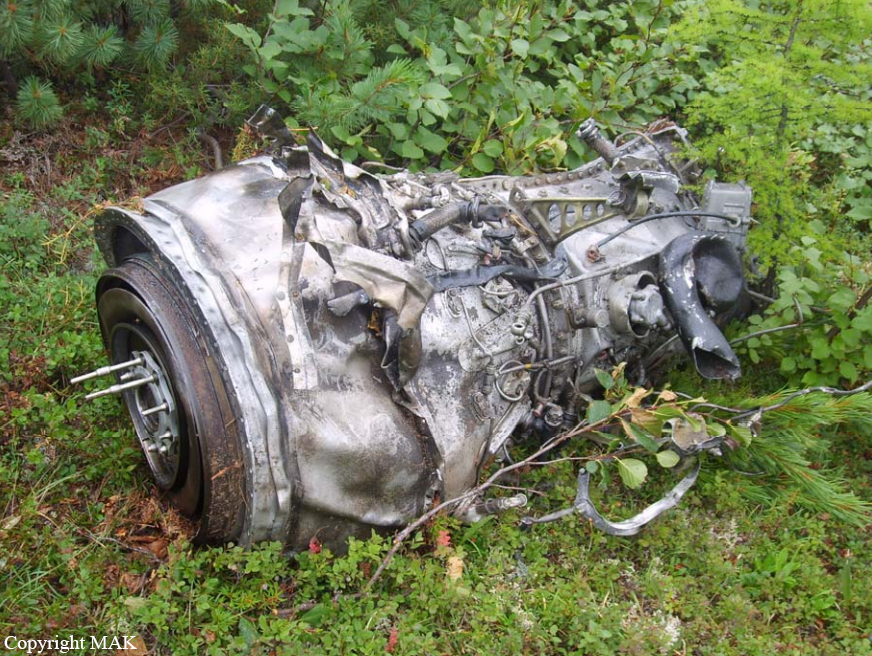
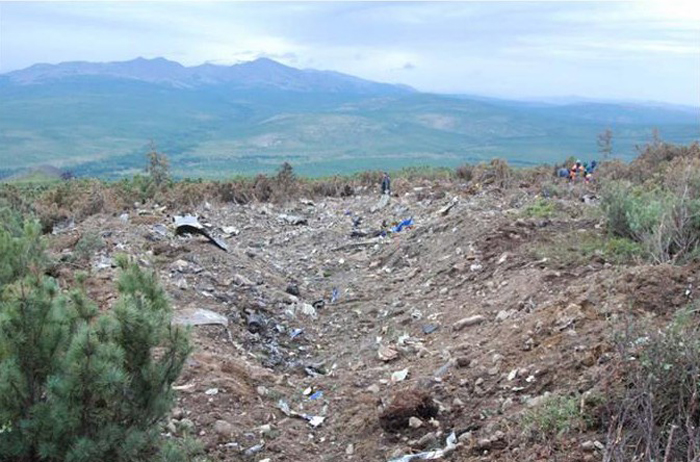
Crash of an Antonov AN-24RV in Blagoveshchensk
Date & Time:
Aug 8, 2011 at 1412 LT
Registration:
RA-46561
Survivors:
Yes
Schedule:
Irkutsk - Chita - Blagoveshchensk - Khabarovsk
MSN:
67310609
YOM:
1976
Flight number:
RD103
Crew on board:
5
Crew fatalities:
Pax on board:
36
Pax fatalities:
Other fatalities:
Total fatalities:
0
Captain / Total hours on type:
6722.00
Copilot / Total hours on type:
575
Aircraft flight hours:
12346
Aircraft flight cycles:
13767
Circumstances:
Following an uneventful flight from Chita, the crew initiated the approach to Blagoveshchensk in poor weather conditions with reduced visibility, heavy rain falls, thunderstorm activity and a cloud base at 150 metres. On final approach, despite he did establish any visual contact with the runway or its light system, the captain continued the approach and passed below the MDA. As the aircraft was not properly aligned with the runway centerline, it descended too low and impacted trees 210 meters to the right of the centerline and 50 meters short of runway 36. Upon impact, the left wing was torn off and the aircraft crashed in a wooded area. It slid over a distance of 450 metres before coming to rest. There was no fire. All 41 occupants were rescued, among them 9 were injured.
Probable cause:
The probable causes of the accident were the failure of the crew to go around and the descent well below decision height without visual reference to landmarks when the aircraft approached the airfield in weather conditions below the captain's, aircraft's and airfield's minima and in dangerous/adverse weather phenomena like thunderstorm, heavy rain and severe turbulence as well as the lack of appropriate response and required actions following terrain awareness warning system alerts resulted in a controlled flight into terrain, collision with obstacles and the destruction of the aircraft.
Contributing factors:
- the crew underestimated the weather conditions at the destination airport thus taking an erroneous decision to attempt an approach in thunderstorm and heavy rain showers,
- unsatisfactory meteorological support of the flight, the dispatcher and later air traffic control provided information about visibility, cloud and wind data that did not correspond to actual conditions that were significantly worse than minimums required,
- clearance for the approach by air traffic control despite the presence of dangerous weather phenomena (thunderstorm, heavy rain) at the aerodrome, which did not correspond to the standard operating procedures at Blagoveshchensk,
- inadequate staffing with a first officer who was performing his first flight after a prolonged leave without proper preparation and training,
- unsatisfactory crew interaction and the failure to adhere to standard operating procedures, especially the call outs of approaching decision height, the absence of a decision by the commander to continue the landing or go-around and the lack of action to recommend/initiate a go around by the first officer.
Contributing factors:
- the crew underestimated the weather conditions at the destination airport thus taking an erroneous decision to attempt an approach in thunderstorm and heavy rain showers,
- unsatisfactory meteorological support of the flight, the dispatcher and later air traffic control provided information about visibility, cloud and wind data that did not correspond to actual conditions that were significantly worse than minimums required,
- clearance for the approach by air traffic control despite the presence of dangerous weather phenomena (thunderstorm, heavy rain) at the aerodrome, which did not correspond to the standard operating procedures at Blagoveshchensk,
- inadequate staffing with a first officer who was performing his first flight after a prolonged leave without proper preparation and training,
- unsatisfactory crew interaction and the failure to adhere to standard operating procedures, especially the call outs of approaching decision height, the absence of a decision by the commander to continue the landing or go-around and the lack of action to recommend/initiate a go around by the first officer.
Final Report:

